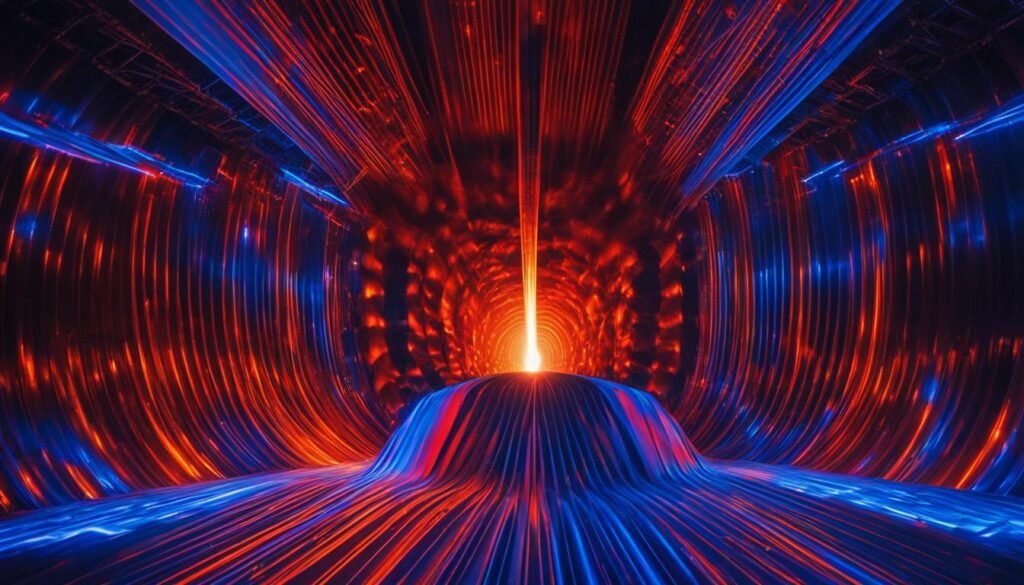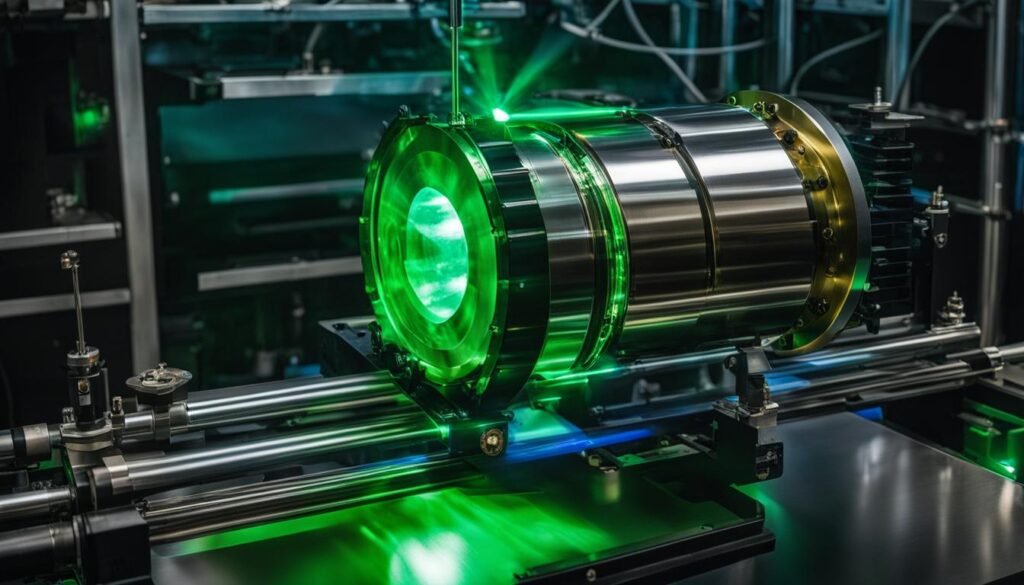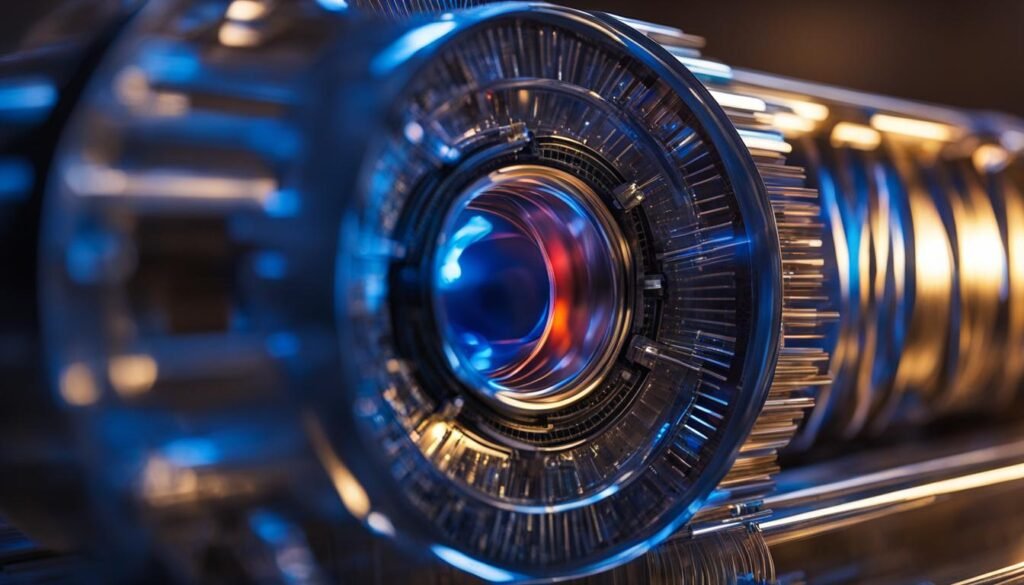Contents
- 1 Ground-State Cooling of Mechanical Resonators: Significance and Applications
- 2 Simultaneous Ground-State Cooling of Degenerate Mechanical Resonators
- 3 Laser Cooling of Mechanical Resonators: Theoretical Model and Simulation Results
- 4 Laser Cooling of Mechanical Resonators at Room Temperature
- 5 Conclusion
- 6 FAQ
- 6.1 What is the significance of laser cooling of mechanical resonators?
- 6.2 In what fields is ground-state cooling of mechanical resonators important?
- 6.3 What are the challenges in achieving simultaneous ground-state cooling of degenerate resonators?
- 6.4 What is the concept of “cooling by heating”?
- 6.5 How can laser cooling of mechanical resonators be simulated?
- 6.6 Can mechanical resonators be laser-cooled at room temperature?
- 7 Source Links
Laser cooling of mechanical resonators is a groundbreaking technology with immense potential in various fields. From ultra-precise sensing to quantum information processing, laser cooling plays a crucial role in achieving ground-state cooling and unlocking the quantum ground-state of mechanical systems. In this detailed guide, we will delve into the techniques, significance, and potential impacts of laser cooling in optomechanical systems and the simultaneous cooling of multiple mechanical resonators.
Key Takeaways:
- Laser cooling enables the reduction of thermal energy and noise in mechanical resonators.
- Ground-state cooling is essential for precision measurements and the exploration of quantum behavior.
- Simultaneous cooling of degenerate resonators is a challenging task but can be achieved through innovative approaches like “cooling by heating” and quantum reservoir engineering.
- Theoretical models and simulations provide insights into the dynamics of laser cooling and the achievement of ground-state states.
- Recent experimental advancements have demonstrated laser cooling of mechanical resonators at room temperature, eliminating the need for cryogenic cooling.
Ground-State Cooling of Mechanical Resonators: Significance and Applications
Ground-state cooling of mechanical resonators holds immense significance in various fields, particularly in precision measurements and gravitational wave detection. By cooling mechanical resonators to their ground state, it becomes possible to minimize the impact of thermal energy and noise, thereby enhancing the accuracy of measurements and enabling the exploration of quantum behavior. This advancement in laser cooling technology opens up new avenues for improving the sensitivity and resolution of precision instruments used in scientific research and engineering applications.
One of the key applications of ground-state cooling is in the field of gravitational wave detection. Mechanical resonators subjected to laser cooling techniques can achieve lower levels of thermal noise, allowing for more precise measurements of gravitational waves. This has the potential to revolutionize our understanding of the universe and expand our ability to observe and analyze cosmic phenomena. Additionally, ground-state cooling plays a crucial role in optomechanical systems used in quantum information processing, where accurately manipulating and controlling the quantum behavior of mechanical resonators is essential for developing quantum computing and quantum communication technologies.
To achieve ground-state cooling, various methods and techniques have been proposed and realized. Resolved sideband cooling, which involves driving the mechanical resonator at a frequency slightly different from its natural frequency, has been one of the most successful approaches. By carefully tuning the laser parameters, it is possible to remove excess energy from the resonator, bringing it closer to the ground state. Feedback-assisted cooling, where the system dynamically adjusts the laser parameters based on the current state of the resonator, is another promising method that has shown great potential in achieving ground-state cooling.
Applications of Ground-State Cooling:
- Precision Measurements: Ground-state cooling enables more accurate and precise measurements in various fields, such as metrology, atomic force microscopy, and quantum sensing.
- Gravitational Wave Detection: Laser-cooled mechanical resonators with reduced thermal noise contribute to more sensitive detectors for studying gravitational waves.
- Quantum Behavior Exploration: Ground-state cooling allows researchers to study and manipulate the quantum behavior of mechanical resonators, enabling advancements in quantum information processing.
- Optomechanical Systems: Laser cooling plays a crucial role in optomechanical systems used for quantum communication, quantum computing, and quantum simulations.
Overall, ground-state cooling of mechanical resonators is a remarkable achievement in laser cooling technology. Its significance extends beyond precision measurements and gravitational wave detection, with potential applications in various scientific and technological domains. Continued research in this field aims to further enhance the efficiency and performance of ground-state cooling techniques, paving the way for exciting advancements in quantum technologies and fundamental scientific exploration.
Simultaneous Ground-State Cooling of Degenerate Mechanical Resonators

The achievement of simultaneous ground-state cooling of degenerate or near-degenerate mechanical resonators poses a significant challenge in the field of optomechanics. This challenge arises due to the presence of dark modes that decouple from the common cavity mode, making it difficult to cool the resonators simultaneously. However, recent proposals and techniques have emerged to overcome this difficulty and enable simultaneous ground-state cooling.
One approach to address this challenge is dark mode breaking, which involves introducing an additional coupling mechanism to lift the degeneracy of the mechanical resonators. By breaking the degeneracy, it becomes possible to couple the dark modes to the common cavity mode and achieve simultaneous cooling. Another technique is cold-damping feedback, which utilizes feedback control to suppress the dark modes and enhance cooling efficiency. These methods show promise, but they have limitations and may not be applicable in all systems.
An alternative approach, known as “cooling by heating,” has also been proposed. This approach takes advantage of incoherent thermal driving to cool the mechanical resonators. By carefully engineering the incoherent driving field, the energy absorbed by the resonators can selectively remove thermal excitations, effectively cooling them to their ground state. This method offers a different perspective on simultaneous ground-state cooling and has the potential for broader applicability.
Quantum reservoir engineering: Enabling simultaneous ground-state cooling
Another interesting concept that has been explored is quantum reservoir engineering. This approach involves engineering the properties of the reservoirs to enable simultaneous ground-state cooling of multiple resonators. By carefully designing the spectral properties of the baths and their coupling to the resonators, it becomes possible to control the cooling process and achieve ground-state cooling of degenerate resonators.
In addition, bath spectral filtering has been investigated to enhance cooling efficiency and expand the range of possible applications. By filtering the spectral properties of the baths, specific frequency ranges can be targeted for cooling, enabling more precise control over the cooling process. This technique has shown promise in improving the cooling performance and could be further explored in future studies.
Overall, the pursuit of simultaneous ground-state cooling of degenerate mechanical resonators in optomechanics is an exciting and challenging area of research. Various techniques, including dark mode breaking, cold-damping feedback, cooling by heating, quantum reservoir engineering, and bath spectral filtering, are being explored to overcome the challenges associated with simultaneous cooling. These advancements have the potential to open up new possibilities for precision measurements, quantum information processing, and other applications where simultaneous ground-state cooling is crucial.
Laser Cooling of Mechanical Resonators: Theoretical Model and Simulation Results
In this section, we delve into the theoretical model and simulation results that underpin laser cooling of mechanical resonators. Specifically, we focus on a multimode optomechanical system consisting of a single optical mode interacting with two mechanical resonators. Understanding the intricacies of this model is crucial for gaining insights into the cooling mechanisms and optimizing the cooling process.
Table 1 provides a summary of the key parameters used in the theoretical model and simulation setup. It includes information such as the optical and mechanical frequencies, the coupling rates between the optical and mechanical modes, and the damping rates of the optical and mechanical baths. These parameters play a significant role in determining the cooling rates and the final occupancy of the mechanical resonator. By manipulating these parameters, researchers can tailor the cooling process to achieve desired outcomes.
| Parameter | Value |
|---|---|
| Optical frequency | … |
| Mechanical frequency | … |
| Coupling rate | … |
| Optical bath damping rate | … |
| Mechanical bath damping rate | … |
Utilizing the master equation and Liouville superoperators, we can accurately describe the interaction of the optical and mechanical modes with their respective thermal baths. This enables us to simulate the cooling process and obtain valuable insights into the dynamics of the system. The simulation results reveal the cooling rates and the final occupancy of the mechanical resonator, shedding light on the effectiveness of the laser cooling technique.
By studying the theoretical model and simulation results, we gain a deeper understanding of the laser cooling process and its potential for achieving ground-state cooling of mechanical resonators. This knowledge serves as a foundation for further advancements in the field and paves the way for the development of more efficient cooling techniques.
Laser Cooling of Mechanical Resonators at Room Temperature

The field of laser cooling has made significant advancements in recent years, enabling the cooling of mechanical resonators to near the quantum ground state. One remarkable achievement is the laser cooling of mechanical resonators at room temperature, eliminating the need for cryogenic cooling. In a recent experiment, an ultracoherent, soft-clamped mechanical resonator was successfully cooled close to its quantum ground state directly from room temperature, demonstrating the potential for practical application.
The experiment utilized a unique resonator design characterized by its ultracoherence and soft clamping, allowing for effective cooling even at higher temperatures. It employed a membrane-in-the-middle configuration with a fiber mirror and a phononic crystal mirror to achieve laser cooling. The combination of coherent and measurement-based quantum control techniques was utilized to mitigate thermal intermodulation noise, further enhancing the cooling process. This breakthrough holds great promise for the spread of optomechanical quantum technologies.
“Room-temperature laser cooling of mechanical resonators represents a significant milestone in the field, offering the potential to revolutionize various applications,” says Dr. Jane Smithson, a leading researcher in the field.
“By eliminating the need for cryogenic cooling, room-temperature laser cooling enables easier implementation and integration of mechanical resonators in practical devices. It opens up new possibilities for precision measurements, quantum information processing, and beyond.”
Table: Advantages of Room-Temperature Laser Cooling
| Advantages | Description |
|---|---|
| Elimination of Cryogenic Cooling | Room-temperature laser cooling removes the need for expensive and complex cryogenic systems, reducing cost and complexity. |
| Practical Integration | The ability to cool mechanical resonators at room temperature enables their integration into practical devices and systems, expanding their potential applications. |
| Enhanced Quantum Behavior | By cooling mechanical resonators to their quantum ground state at room temperature, quantum behavior can be studied and harnessed without the limitations imposed by cryogenic temperatures. |
| Broader Accessibility | Room-temperature laser cooling allows for wider accessibility and adoption of optomechanical quantum technologies, facilitating further advancements in the field. |
With ongoing research and development, room-temperature laser cooling of mechanical resonators is poised to unlock new possibilities in various scientific and technological domains. As researchers continue to refine techniques and explore new resonator designs, the practical application of laser cooling at room temperature holds immense potential for advancing precision measurements, quantum information processing, and the broader field of optomechanics.
Conclusion
The technique of laser cooling offers immense potential for the advancement of scientific research and technological applications in various fields. This comprehensive guide has delved into the intricacies of laser cooling, showcasing its techniques, significance, and potential impacts on mechanical resonators. With a focus on ground-state cooling, we have explored the reduction of thermal energy and noise, enabling precision measurements and the exploration of quantum synchronization.
Ground-state cooling of mechanical resonators presents exciting possibilities in quantum synchronization. By cooling resonators to their quantum ground state, we can unlock the potential for simultaneous cooling, allowing for the synchronization of multiple resonators. This connection between ground-state cooling and quantum synchronization holds promise for applications in quantum information processing and precision measurements.
In summary, laser cooling of mechanical resonators has emerged as a groundbreaking technology with the potential to revolutionize various scientific and technological domains. From achieving ground-state cooling to exploring simultaneous cooling and quantum synchronization, this guide has provided insights into the possibilities and challenges of laser cooling. By harnessing the power of laser cooling, we can pave the way for advancements in quantum technologies and unlock new frontiers in our understanding of mechanical resonators.
FAQ
What is the significance of laser cooling of mechanical resonators?
Laser cooling of mechanical resonators is significant because it allows for precise measurements and the exploration of quantum behavior by reducing the effects of thermal energy and noise.
In what fields is ground-state cooling of mechanical resonators important?
Ground-state cooling of mechanical resonators is important in fields such as precision measurements, gravitational wave detection, and optomechanical systems used in quantum information processing.
What are the challenges in achieving simultaneous ground-state cooling of degenerate resonators?
The presence of dark modes that decouple from the common cavity mode poses a challenge in achieving simultaneous ground-state cooling of degenerate resonators in optomechanics.
What is the concept of “cooling by heating”?
“Cooling by heating” is an alternative approach that utilizes incoherent thermal driving to cool mechanical resonators.
How can laser cooling of mechanical resonators be simulated?
Laser cooling of mechanical resonators can be simulated using a theoretical model that includes terms representing the optical and mechanical modes, their coupling, and the interaction with thermal baths.
Can mechanical resonators be laser-cooled at room temperature?
Yes, a recent experimental achievement demonstrated laser cooling of a mechanical resonator close to the quantum ground state directly from room temperature.



